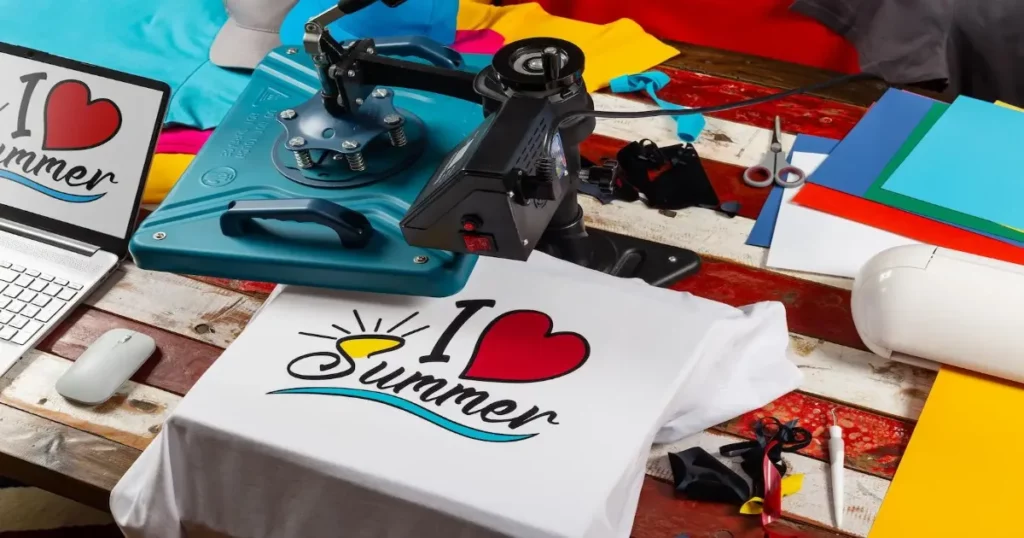No products in the cart.
Blog
Mastering The Art Of Sublimation Printing T Shirts
In the ever-evolving world of custom apparel, sublimation printing T shirts has emerged as a true art form. Its ability to transform plain T-shirts into vibrant canvases of self-expression has captured the imagination of designers, entrepreneurs, and hobbyists alike.
In this article, we delve into the intricacies of sublimation printing on T-shirts, uncovering the secrets to achieving stunning, long-lasting results. From the science behind the process to practical tips and techniques, join us on a journey to mastering the art of sublimation printing and elevating your T-shirt game to new heights.
What are Sublimation Printing T Shirts?
Sublimation printing is a fascinating and innovative technique used in the world of apparel customization, especially for T-shirts. At its core, sublimation printing involves the transfer of dye from a carrier sheet onto the fabric of a T-shirt through the application of heat and pressure.
This method is known for producing vibrant and long-lasting designs, making it a popular choice for custom apparel, sports jerseys, and promotional merchandise.
The science behind sublimation printing revolves around the concept of sublimation, a phase transition where a substance changes directly from a solid to a gas without passing through the liquid phase.
In the case of sublimation printing, a special type of dye, called sublimation ink, is used. Sublimation ink contains solid pigments that have the unique property of sublimating when exposed to heat.
To execute the sublimation printing process, the design is first digitally printed onto a carrier sheet using sublimation ink. This carrier sheet is typically made of a special transfer paper designed to hold the ink.
The T-shirt, on the other hand, is made of synthetic materials like polyester, which have a higher affinity for sublimation inks due to their molecular structure.
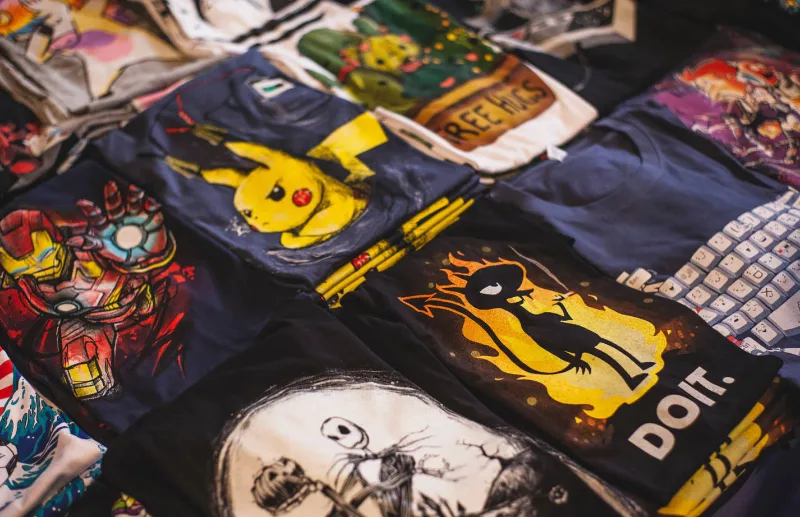
When heat and pressure are applied to the carrier sheet containing the sublimation ink, a remarkable transformation occurs. The solid ink pigments undergo sublimation, turning into a gas without passing through a liquid phase.
This gas then permeates the polyester fibers of the T-shirt, becoming embedded within the fabric. As the temperature cools down, the sublimated ink reverts to its solid form, trapping the dye within the polyester fibers.
The result is a vibrant, high-resolution image that is not only vivid but also incredibly durable. This intricate science behind sublimation printing has made it a popular choice for creating customized T-shirts that are both visually stunning and long-lasting.
Advantages of Sublimation Printing for T-Shirts
The advantages of sublimation printing for T-shirts are numerous and make it a preferred choice for custom apparel.
Vibrant And Durable Colors
One of the standout benefits is the vibrant and durable colors it produces. Sublimation inks have the remarkable ability to bond with the fabric fibers on a molecular level. This means that the prints are not simply sitting on top of the fabric; they become an integral part of it.
As a result, sublimation prints exhibit photo-realistic quality with colors that remain vivid and vibrant over time. Unlike traditional methods like screen printing or vinyl transfers, sublimation prints won’t crack, peel, or fade, ensuring that your T-shirt designs stay as impressive as the day they were made.
Soft And Comfortable Feel
Comfort is another key advantage of sublimation printing. Because the dye becomes a permanent part of the fabric, the prints feel soft and comfortable against the skin.
There’s no stiffness or bulkiness often associated with vinyl transfers or other heavy printing methods. This feature makes sublimation-printed T-shirts a delight to wear, even for extended periods, as they maintain the breathable and cozy feel of the original fabric.
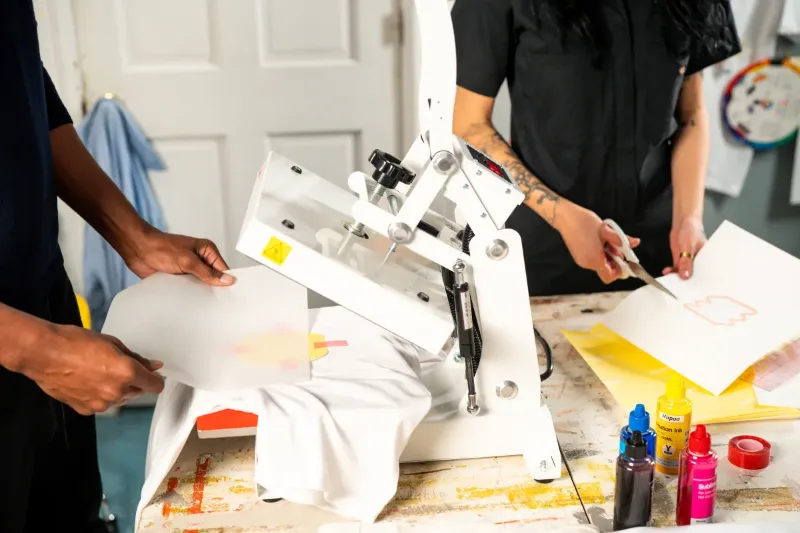
Wide Range Of Possibilities
Sublimation printing also opens up a world of creative possibilities. Whether you’re looking to print full-color designs, intricate patterns, or even high-resolution photographs, sublimation can handle it all with ease.
This versatility allows for a wide range of design options, making it perfect for expressing your unique style, promoting your brand, or creating memorable personalized gifts.
No Minimum Order Quantities
One more advantage that sets sublimation printing apart is the flexibility it offers in terms of order quantities. Unlike some other printing methods that may require minimum order quantities, sublimation is incredibly accommodating.
This makes it ideal for small businesses, startups, and individuals looking to create custom T-shirts for personal projects or special occasions. With sublimation, you can print as few or as many T-shirts as you need, ensuring that you have complete control over your production and budget.
Sublimation printing for T-shirts provides a winning combination of vibrant and durable prints, comfortable wear, design versatility, and flexibility in order quantities. Whether you’re looking to create eye-catching promotional apparel or personalized gifts, sublimation offers a high-quality solution that truly stands out in the world of custom T-shirt printing.
Getting Started with Sublimation Printing
Equipment
To embark on your journey with sublimation printing, it’s essential to have the right equipment at your disposal. Here’s a breakdown of what you’ll need to get started:
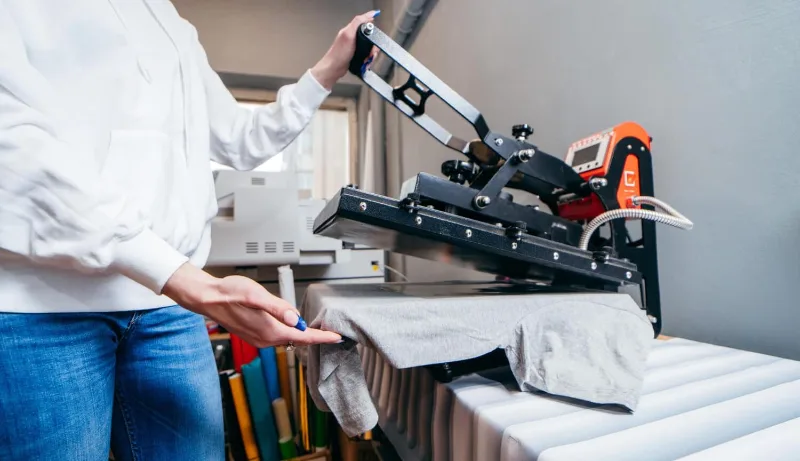
Sublimation Printer
Choosing the right sublimation printer is crucial. For beginners, a budget-friendly option like the Epson SureColor P400 is an excellent choice, offering decent print quality.
More advanced users may opt for models like the Epson SureColor P800 or the Sawgrass Virtuoso SG500/SG1000, which provide higher resolution and color accuracy.
Heat Press
A heat press is a fundamental tool in sublimation printing. There are different types, such as clamshell, swing-away, and slide-out, each with its pros and cons.
Consider factors like size, temperature range, and even pressure distribution when selecting a heat press. Popular brands like HIX, Geo Knight, and Stahls offer reliable options.
Sublimation Paper
Sublimation paper is specifically designed to hold sublimation ink and release it onto your chosen substrate (usually a T-shirt). Different types of sublimation paper cater to varying requirements, such as light or dark fabrics. It’s essential to choose the right paper for your project to achieve the best results.
Sublimation Blanks
While T-shirts are a primary focus, sublimation allows for customization beyond apparel. Explore a wide range of sublimation blanks, including mugs, phone cases, mousepads, and more. Many suppliers offer a variety of blank products that can be transformed into unique, personalized items.
Software
In addition to equipment, consider the software aspect of sublimation printing. You’ll need design software like Adobe Photoshop or CorelDRAW to create or modify your designs. Alternatively, some online platforms provide templates for sublimation printing, simplifying the design process.

Design Considerations
When it comes to designing your prints, keep the following considerations in mind:
High-Resolution Images
To achieve the best results, always work with high-resolution images. Low-quality images can result in pixelation and poor print quality.
Mirroring
If you’re printing your design on a transfer sheet, remember to mirror the image horizontally. This ensures that the final print appears correctly when transferred onto your substrate.
Fabric Composition
Sublimation works best with polyester or polyester-blend fabrics. The higher the polyester content, the more vibrant and durable your print will be. Be cautious when attempting to sublimate on cotton or other natural fibers, as the results may not be as satisfactory.
By starting with the right equipment, software, and design considerations, you’ll be well-prepared to dive into the exciting world of sublimation printing. With practice and creativity, you can create stunning custom designs on various substrates, opening up endless possibilities for personalization and customization.
The Sublimation Printing Process
The sublimation printing process can be broken down into a series of straightforward steps, ensuring that you achieve vibrant and long-lasting designs on your T-shirts. Here’s a step-by-step guide on how to print and press a T-shirt using sublimation:

Prepare Your Design
Begin by creating or selecting the design you want to print on your T-shirt. Use design software like Adobe Photoshop or CorelDRAW to ensure your design is in high resolution and mirror it horizontally if needed. Once your design is ready, print it onto sublimation paper using a sublimation printer.
Trim and Pre-Press
After printing, carefully trim the excess paper around your design. Next, pre-press your T-shirt using your heat press machine. This step helps remove any wrinkles and moisture from the fabric, ensuring a smooth and even transfer of the sublimation ink.
Position and Secure
Place your T-shirt on the heat press machine’s platen, ensuring it is flat and smooth. Position the sublimation paper with your design face down on the T-shirt, making sure it is centered and aligned as desired. To prevent any unwanted movement during pressing, secure the paper in place with heat-resistant tape.
Set Temperature and Time
Refer to the specific instructions for your heat press machine and sublimation paper to determine the correct temperature and pressing time. Typically, sublimation requires temperatures around 375-400°F (190-205°C) and pressing times ranging from 30 to 60 seconds. Adjust the heat press settings accordingly.
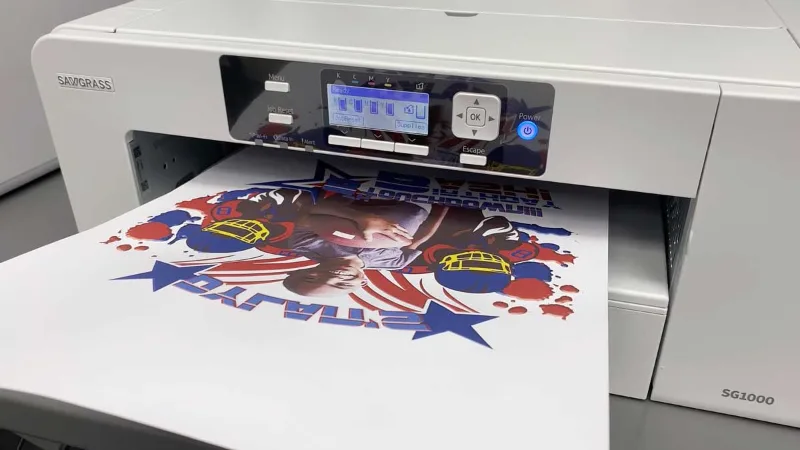
Press and Cool
Once you’ve set the correct temperature and time, it’s time to start the sublimation process. Close the heat press machine, applying even pressure to ensure proper ink transfer. The heat and pressure cause the solid sublimation ink to transform into a gas, which then permeates the polyester fibers of the T-shirt.
After the pressing time has elapsed, open the heat press and carefully remove the sublimation paper. Allow the T-shirt to cool completely, allowing the ink to solidify and become a permanent part of the fabric.
The result will be a vivid and durable design that doesn’t crack, peel, or fade over time, ensuring your custom T-shirts maintain their quality and vibrancy wash after wash.
How To Choose Perfect T-Shirts For Sublimation Printing
Choosing the perfect T-shirt for sublimation printing is a crucial step to ensure the best possible outcome for your custom designs. Here are some key factors to consider when selecting T-shirts for sublimation printing:
Fabric Composition
The most critical factor to keep in mind is the fabric composition of the T-shirt. Sublimation printing works best on fabrics with a high polyester content or a polyester blend.
Polyester fibers have a molecular structure that readily accepts sublimation ink, allowing it to bond deeply and permanently with the fabric. A T-shirt with at least 50% polyester content is ideal for vibrant and long-lasting sublimation prints.
Color and Style
Consider the color of the T-shirt and the style you want to offer. Sublimation works best on white or light-colored garments because the dye becomes transparent during the printing process.
Vibrant colors and intricate designs will show up most vividly on white shirts. However, you can experiment with pastel or light-colored shirts to achieve unique effects.

Weight and Thickness
The weight and thickness of the T-shirt fabric can impact the final result. Lighter-weight fabrics may result in a softer, more comfortable feel, while thicker fabrics can provide added durability. The choice between these factors depends on your preferences and the intended use of the T-shirt.
Fit and Cut
Consider the fit and cut of the T-shirt, as different styles and cuts cater to various demographics. Options include a crew neck, V-neck, fitted, relaxed fit, and more. Choose T-shirt styles that align with your target audience’s preferences and your design’s aesthetics.
Brand and Quality
Quality matters when it comes to T-shirts. Select reputable T-shirt brands known for their durability and color retention. High-quality shirts ensure that your sublimation prints look good even after numerous washes and wear.
Availability and Supplier
Ensure that the T-shirts you choose are readily available from reliable suppliers. Consistency in your supply chain is vital, especially if you plan to produce custom T-shirts in large quantities.
Testing
Before committing to a particular T-shirt brand or style, it’s a good idea to conduct a few test prints. This allows you to assess how your designs appear on the fabric and whether they meet your quality standards. It’s also an opportunity to fine-tune your sublimation printing process.
Conclusion
Sublimation printing t shirts technique offers endless creative possibilities, allowing you to express your artistic vision and produce high-quality, durable garments. With the right equipment, techniques, and a dash of creativity, you can turn plain t-shirts into wearable works of art.
So, whether you’re a seasoned professional or a novice in the world of sublimation printing, take the time to perfect your craft and unlock the full potential of this exciting and dynamic method.


